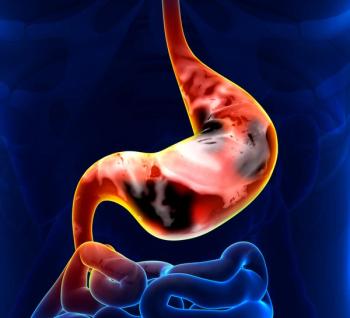
Trends in Myeloma Incidence and Mortality by Racial/Ethnic Group Observed From 2003 to 2016

From 2003 to 2016, investigators noted that incidence of multiple myeloma varied by racial and ethnic group, as well as sex.
Incidence rates of multiple myeloma increased for non-Hispanic White male patients, remained stable for male and female patients across all racial and ethnic groups, and decreased among patients who were American Indian/Alaskan Native, non-Hispanic White, and non-Hispanic Black men and Hispanic women from 2003 to 2016, although incidence rates remained highest among Black and Hispanic individuals.
Within that period, investigators noted that overall incidence rates were 0.45 for solitary plasmacytoma, 0.09 for extramedullary plasmacytoma, and 8.47 for multiple myeloma per 100,000 adults. Additionally, incidence of multiple myeloma from 2003 to 2016 increased among non-Hispanic White patients (average annual percentage change [AAPC], 1.78%) and non-Hispanic Black patients (AAPC, 2.98%) between the ages of 20 and 49 years old. Incidence rates also increased for non-Hispanic White and non-Hispanic Black individuals between the ages of 50 and 59 years, respectively (AAPC, 1.17% and 1.24%). Overall, the 2 groups had an increase of 0.91% and 0.96%, respectively.
“Our study findings are consistent with other studies showing that multiple myeloma incidence is higher among non‐Hispanic Black patients and Hispanic patients than among non‐Hispanic White patients. We also found that multiple myeloma incidence rates increased among those 20 to 69 years, but it is still primarily a disease among the elderly. Understanding the role of these characteristics may inform understanding of future myeloma rates,” the authors wrote.
Investigators utilized population-based data from US Cancer Statistics that combined datasets from Centers for Disease Control and Prevention's, National Program of Cancer Registries. and the Surveillance, Epidemiology and End Results program. Selected cases included patients with solitary and extramedullary plasmacytoma, and multiple myeloma, the majority of which were microscopically confirmed (87.54%), with several others being confirmed via laboratory testing (2.24%), radiography (1.61%), or by unknown means (6.55%).
Additional findings indicated that incidence rates were higher among men vs women for several disease types, including solitary plasmacytoma (RR, 1.92; 95% CI, 1.85-1.98), extramedullary plasmacytoma (IRR, 1.99; 95% CI, 1.86-2.12), and multiple myeloma (IRR, 1.50; 95% CI, 1.49-1.52).
In terms of age-specific incidence, rates were highest among those 80 years or older compared with other age groups across all disease types, including solitary plasmacytoma (IR, 1.51 per 100,000 persons), extramedullary plasmacytoma (IR, 0.42), and multiple myeloma (IR, 38.32). Disease incidence was lowest among those between 20 and 49 years of age, with rates of 0.12 for solitary plasmacytoma, 0.04 for extramedullary plasmacytoma, and 1.20 for multiple myeloma per 100,000 persons.
When assessing incidence by race, investigators reported that non-Hispanic Black patients had the highest incidence among all groups, including 0.67 per 100,000 persons for solitary plasmacytoma, 0.16 for extramedullary plasmacytoma, and 17.43 for multiple myeloma. Asian and Pacific Islander individuals had the lowest incidence rates of solitary plasmacytoma (IR, 0.18 per 100,00) and multiple myeloma (IR, 4.91), and incidence for extramedullary plasmacytoma was lowest among non-Hispanic White individuals (IR, 0.12 per 100,000).
Moreover, incidence of solitary plasmacytoma was somewhat higher among those residing in a non-metropolitan area vs a metropolitan area.
Within the period, myeloma-related mortality among adult patients was 4.47 per 100,000 individuals, with men having a statistically significant higher rate (MR, 5.97) compared with women (MR, 3.86; MRR, 1.55; 95% CI, 1.53-1.56). Additionally, in terms of age-specific death, those who were aged 50 to 59 years (RR, 10.62; 95% CI, 10.28-10.98), 60 to 69 years (RR, 32.94; 95% CI, 31.94-33.99), 70 to 79 years (RR, 79.29; 95% CI, 76.92-81.76), and 80 or older (RR, 131.24; 95% CI, 127.31-135.31) had the highest mortality rate compared with younger patients aged 20 to 49 years old (0.26 per 100,000).
Mortality was highest among non-Hispanic Black patients (9.12 per 100,000) versus non-Hispanic White patients (2.05; 95% CI, 2.03-2.08). Death rates were notably low among American Indian and Alaskan Native patients (4.03 per 100,000; RR, 0.91; 95% CI, 0.84-0.98), Asian and Pacific Islander patients (2.3; RR, 0.52; 95% CI, 0.50-0.54), and Hispanic patients (3.97; RR, 0.89; 95% CI, 0.87-0.91) compared with non-Hispanic White patients (MR, 4.44).
Investigators noted that the incidence of multiple myeloma increased by 0.81% for male patients per year, as well as increasing 0.92% among White men per year. Incidence also increased among American Indian and Alaskan Native patients by 2.19% annually. No other statistically significant changes were noted among men of other racial of ethnic groups. Although multiple myeloma incidence increased by 0.75% for women annually, no significant changes were noted among women in any racial or ethnic group.
Reference
Ellington TD, Henley SJ, Wilson RJ, et al. Trends in solitary plasmacytoma, extramedullary plasmacytoma, and plasma cell myeloma incidence and myeloma mortality by racial‐ethnic group, United States 2003‐2016. Cancer Med. 2021;10(1):386-395. doi:10.1002/cam4.3444
Newsletter
Stay up to date on recent advances in the multidisciplinary approach to cancer.


















































































